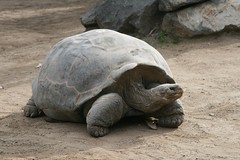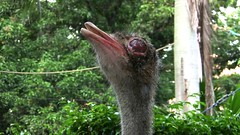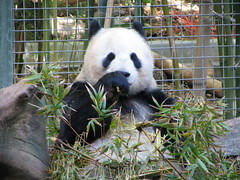I happen to be under the firm and unequivocal opinion that pandas are
AWESOME! I know there are many out there who would agree.
Did you know that pandas have an inseparable relationship with bamboo? They spend at least 12 hours each day eating bamboo. Bamboo actually has very little nutrition per pound, so to get the needed nutrients, pandas eat as much as 84 pounds (38 kilograms) of it each day.
So you can guess that bamboo is the most important plant in a giant panda's life. Pandas live in cold and rainy bamboo forests high in the mountains of western China.
Giant pandas have also been known to eat grasses, bulbs, fruits, some insects, and even rodents and
carrion. At the
San Diego Zoo, pandas are offered bamboo, carrots, yams, and special leaf eater biscuits made of grain and packed with all the vitamins and minerals pandas need.
The average panda
home range is thought to be approximately 1.9 square miles (5 square kilometers), with male ranges larger than that of females. In areas where food is not plentiful, the home range can be larger.
|
| Giant Panda enjoying its meal |
A word of caution. While pandas are awesome and cute, it is NEVER safe to be too close to one unless you are a trained professional. They know best when and how to approach and interact with this animal. After all, it is of the bear family and very wild. So as with most animals of the world, it is best to watch from far, and admire in "
awwwwwww".
Awesome indeed.
Visit the
World Wildlife Fund to help support all animals including the adorable panda.
 Image via Wikipedia
Image via Wikipedia
















